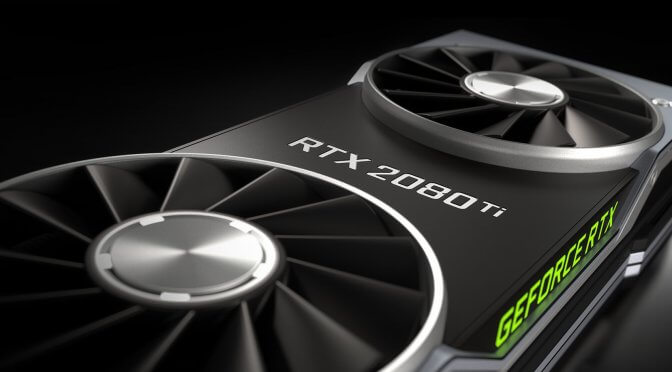And the moment a lot of PC gamers have been waiting for has arrived. The first third-party benchmarks for NVIDIA’s latest graphics cards, the GeForce RTX 2080Ti and the GeForce RTX 2080 are now live.
The first benchmarks are coming from OverclockersClub. We’ll try to focus on the games that NVIDIA has not covered in its official graphs. As such, we can see from OverclockersClub’s tests that the GeForce RTX 2080Ti is unable to run Ghost Recon Wildlands with 60fps in 4K on Ultra details. On the other hand, NVIDIA’s latest graphics card was able to run with more than 60fps in 4K both Far Cry 5 and The Witcher 3. Here are the games in the following screenshots (since there aren’t included in them). From left to right: Shadow of the Tomb Raider (Highest settings with SMAA 4X), Far Cry 5, Ghost Recon Wildlands, Battlefield 1 and The Witcher 3).
On the other hand, TechpowerUp has tested some other games like Grand Theft Auto V, Hellblade: Senua’s Sacrifice, Assassin’s Creed Origins, Prey and Dragon Quest XI. Apart from Hellblade: Senua’s Sacrifice, NVIDIA’s latest graphics card was able to run these games in 4K with an average of 60fps.
Overclock3D has also published its review, in which it tested Deus Ex: Mankind Divided, Monster Hunter World, Rise of the Tomb Raider and Middle-earth: Shadow of War.
Last but not least, Guru3D has tested some other games like Resident Evil 7, Kingdom Come: Deliverance, Star Wars: Battlefront 2 and Final Fantasy XV. What’s really cool here is that Guru3D has recorded the FFXV benchmark, showing in action the new anti-aliasing technique, DLSS.

John is the founder and Editor in Chief at DSOGaming. He is a PC gaming fan and highly supports the modding and indie communities. Before creating DSOGaming, John worked on numerous gaming websites. While he is a die-hard PC gamer, his gaming roots can be found on consoles. John loved – and still does – the 16-bit consoles, and considers SNES to be one of the best consoles. Still, the PC platform won him over consoles. That was mainly due to 3DFX and its iconic dedicated 3D accelerator graphics card, Voodoo 2. John has also written a higher degree thesis on the “The Evolution of PC graphics cards.”
Contact: Email


















